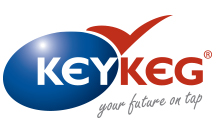
The revolutionary one-way KeyKeg®, suitable for any liquid and especially carbonated drinks, is developed according to the bag-in-ball concept. This lightweight disposable keg has been developed specially for beers and offers you extra protection, longer preservation, more sales and a clear reduction of costs.
The KeyKeg® is available in a 20 and 30 litre version and weighs only 1.0 and 1.4 kg respectively. The extreme low weight results in up to 25% more beer, wine or cider per transport and voluminous transport of empty kegs back is no longer necessary.
In export markets, KeyKeg® solves all the logistic problems connected to steel kegs, which disappear because of theft and losses. At low-volume outlets KeyKeg® provides easy use and long preserved quality after broaching.
http://keykeg.com/
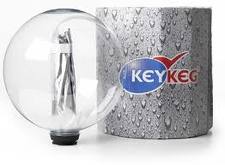
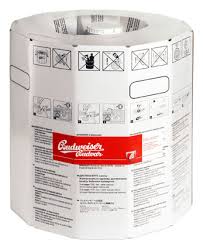
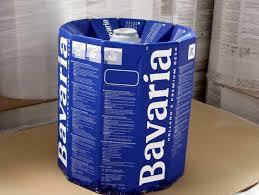
JUST Release : SLIM LINE
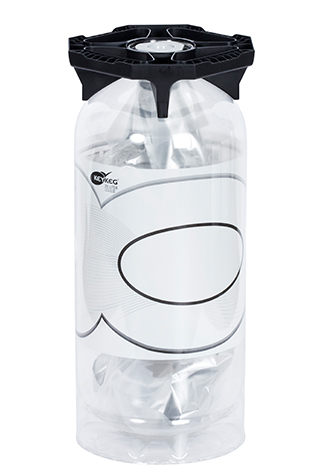
[ add comment ] ( 109 views ) | permalink |




 ( 3 / 919 )
( 3 / 919 )
INNOVATION, it’s what we’re all seeking today in the consumer packaged goods (CPG) industry.
Yet, why has it been so challenging to implement?
A. Manufacturing processes, long-established infrastructure and supplier relationship and a quick eye for profits encumber today's CPG companies.
While there are facelifts and graphic changes taking place with packaging redesigns, companies are resisting investing resources into making profound packaging changes.
The resistance is largely because companies have invested enormous resources into owing their own manufacturing equipment and factories.
B. The "innovation resistance" is mainly on "consumables", which are products that are perishable and or consumed at a high rate.
Durables , such as consumer electronics packaging and toy packaging, cosmetics, are not consumed at the same rate and aren't perishable, so they can be packaged overseas and by hand.
Consumables, instead typically require an automated filling infrastructure.
This type of infrastructure is a huge investment for a company. Once that investment has been made, companies really don't want to negatively impact it by having to change it.
C. The factories of the end-users companies are set-up to optimize the production of yesterday's ideas and are unable to satisfy tomorrow's needs.
The consumable products industry derives much of its profit from economic scale and efficiencies.
They can produce packaged product inexpensively due to the efficiency of high volume /high speed production and it's their investment in high speed/volume automated manufacturing that makes this possible.
This investment encumbers change because equipment is typically built to do thing efficiently and not oriented to design or personalization.
Consequently a company often cannot afford to change their existing equipment before it has been depreciated.
Also changes takes time!
Most companies won't tolerate the time associated with the changeover.
Change is the "antithesis" to efficiency (= costs saving) and so is costly and in hard economic period like that is though to accept.
D. Many consumer products sold on the market compete purely on cost! Profits are often derived from reducing the cost of raw material used and packaging for many buyers is the main cost to be reduced.
This strategy and attitude may have worked for a while but not for ever; Private Label has become more sophisticated and their product quality has improved to the point of parity in some instances that they can do it cheaper than a Brand Company.
The focus for national brands need to be on providing a value-added point of difference by creating a better experience.
When you have a point of difference by creating a better experience, you can typically command a higher price and packaging can play a strategic role in achieving that key target.
E. So Brand companies must stop thinking of packaging as an "expense" and start thinking of it as an "Investment".
The world has changed and packaging is the newly discover "brand ambassador" and the value-added differentiator, as advertising has become fragmented.
There are naive expectations that a profound structural packaging change can happen quickly and without a financial outlay.
Appropriate time and inventive freedom needs to be given to packaging exploration so as to create something different.
Source : Packaging Strategy - Interview to Peter Clarke - Product Ventures
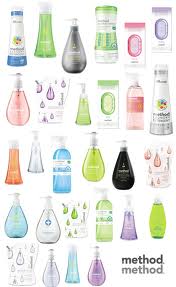
[ add comment ] ( 81 views ) | permalink |




 ( 3 / 2210 )
( 3 / 2210 )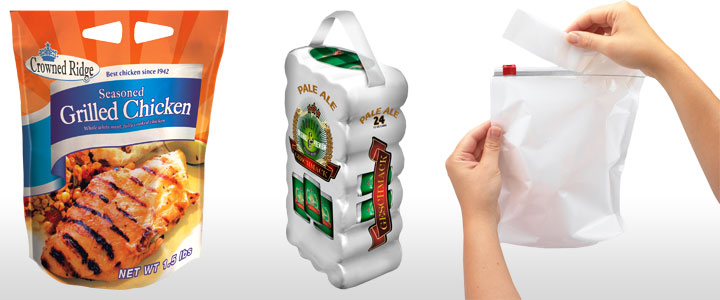
Convenience features such as easy opening, reclosability, portability and one-handed use continue to drive food-packaging innovation for a range of processed foods, including entrees, snacks and even foodservice products.
To make microwave cooking of chilled and frozen entrees even easier than it already is -- and to improve palatability, to boot -- microwave-packaging supplier Shieltronics, Eindhoven, The Netherlands, has created a multi-compartment tray that enables microwaving of vastly different foods with no time-outs to stir the contents or spoon sauce over them.
Brand owner Conveni, Liessel, The Netherlands, will launch Qizini-brand refrigerated entrees in the package this May. The injection-molded, dual-compartment Qizini tray will contain a fresh vegetable in one compartment and a ready-to-cook protein and starch (fish and potatoes, for example) in the other.
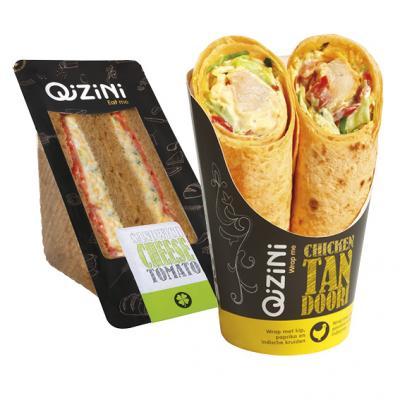
“The use of separate compartments prevents the mixture of taste and aroma and allows an optimal heating of the different food components," explains Hans Gehéniau, Shieltronics’ chief operations officer. "As different food components have different dielectric properties, they have their own optimal heating characteristics” based on a combination of power and time.
The Shieltronics technology addresses these differences “by shielding the most vulnerable components so they receive less energy,” Gehéniau adds.
A microwave-shielding label is molded into the vertical wall of one compartment of the tray using in-mold labeling; consequently, the food in that part of the tray receives gentler treatment from the microwave than the food in the unshielded compartment.
In addition to regulating temperature, the shielding label, which is on the exterior of the package, can be printed in full color with graphics and/or text.
The package’s convenience and product-quality benefits are noteworthy.
According to Gehéniau, the shielding technology eliminates hot and cold spots in microwaved food and delivers “the same culinary taste from a microwave meal as [the consumer] would get served in a restaurant.” He adds that cooking instructions are extremely simple.
The meal cooks in 4 min. without “instructions like ‘heat for 30 seconds then stir, and do this three times.’ ”
In addition to entrees, potential applications for the package include combinations of hot and cold foods, such as meatloaf and salad, or even ice cream and chocolate sauce.
That’s a wrap
Meanwhile, on this side of the Atlantic,Hormel Foods Corp., Austin, Minn., is targeting on-the-go consumers, specifically teenagers, with the product concept and packaging for its Hormel REV wraps.
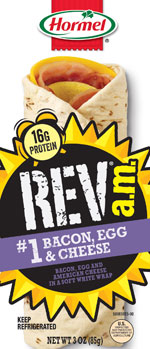
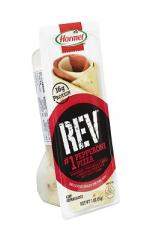
Introduced nationally in the U.S. in July 2013, Rev wraps are protein-rich snacks that can be consumed cold or hot. Sold refrigerated in the lunchmeat case, the product comes in an array of flavors: Pepperoni Pizza, Meat Lovers Pizza, Peppered Turkey, Ham and Cheese, Hot Peppered Ham, Italian Style Ham, Italian Style and Spicy Italian Style.
The package is a thermoformed polypropylene tray heat-sealed to barrier-film lidding. The opaque lidding is printed with brand and product information, and the tray is transparent so consumers can view the product. The tray’s shape features a wide base so the packages can be merchandised standing up. In addition to single-serving packs for all varieties, Hormel sells the Pepperoni Pizza wraps in three-packs.
The product and its packaging are the epitome of convenience. “Hormel REV wraps are easy to open, portable and designed to be held in one hand, so no utensils or plates are needed,” says Holly Drennan, senior product manager of meat products marketing at Hormel. Drennan adds that the “packaging is quiet, recyclable and the product can be warmed directly in the packaging” in a microwave oven.
On the home front
Packaging for products used in-home also continue to emphasize convenience. Iselin, N.J.-based Domino Foods Inc., which is part of the ASR Group, recently introduced an unusual new package for Domino and C&H brand Quick Dissolve Superfine white sugar and Pourable brown sugar. Both products are formulated for easy pouring with no clumps.
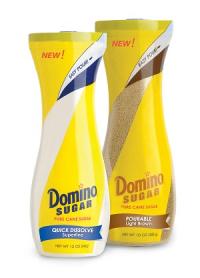
The rigid package (12 oz. for white sugar and 10 oz. for brown) is a curvy, vase-like structure with a flip-top dispensing closure. The bottle is made from polyethylene terephthalate (PET) and the closure from polypropylene. Both parts are recyclable, although not all municipalities collect polypropylene curbside.
The Domino and C&H packages are decorated with a full-body shrink label, and the graphics incorporate plenty of transparent space so consumers can see how different the texture of the products is from that of conventional white and brown sugars.
In addition to creating a good-looking package, the bottle was ergonomically designed for easy gripping by hands of all sizes. And the flip-top dispenser can be operated with one hand. “We wanted something that would be very easy to pick up and easy to dispense” from, says Brian O’Malley, president and CEO of Domino Foods.
Using the new package, consumers can add sugar to their beverages, cereals and other foods easily and with control over the product flow. The design eliminates the need for a spoon and perhaps even a sugar bowl. Domino worked with industrial design firm 4sight Inc., New York, on the package design.
Easy-open salad greens
Produce products are moving toward more convenient packaging, too.Ready Pac Foods, Inc., Irwindale, Calif., has switched to an easy-open rigid package for salad greens.
Consumers peel back the lidding film to open the pack, and they can easily reseal the lidding afterwards.
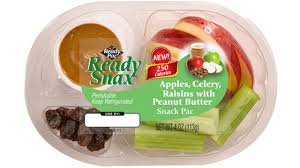
Dubbed the Peel and Reseal Tray, the package consists of a recycled-PET container heat-sealed to dual-layer polyester lidding. Ready Pac worked with Clear Lam Packaging Inc., Elk Grove Village, Ill., to develop the package.
The pack’s design provides several benefits vs. a clamshell with a plastic lid. It offers convenience plus product protection “by improving opening and closing and providing a reclose feature that keeps air out better than a traditional lettuce tray,” says Roman Forowycz, group president and chief marketing officer at Clear Lam.
Clear Lam provides Ready Pac with the lidding; the thermoformed trays are supplied by D&W Fine Pack, Elk Grove Village, Ill., and Sabert Corp., Sayreville, N.J.
The package also enhances shelf life vs. conventional clamshells, because the lidding incorporates laser perforations that control oxygen and carbon dioxide transmission into and out of the package.
Its sustainability benefits are noteworthy, as well. “The new peel-reseal package significantly reduces the amount of plastic used as compared to traditional lettuce trays that include a rigid lid and PVC shrink band,” says Forowycz. “It eliminates preformed lids that require a lot of warehousing space and truck shipments that need to move the preformed plastic lids from the thermoformer to the produce processor.” Thus the package reduces fuel consumption and greenhouse gas emissions.
“And most importantly,” Forowycz adds, “the new peel-reseal package enhances the consumer experience.
[ add comment ] ( 625 views ) | permalink |




 ( 3 / 2215 )
( 3 / 2215 )
From the introduction of brands such as Tesco Finest in the 90's, to Grey Goose and the race to create the most superpremium vodka, through to today’s war of waters, premiumisation is probably now more prolific and more desirable than ever before.
Brands are continually looking for new ways to add value.
And with forward-facing brands such as Grey Goose continuing to shift the premiumisation stakes – using a new campaign (‘Iconoclasts of Taste’) rather than product innovation to reassert its premium status – the question of what is premiumisation is ever more prescient and complex.
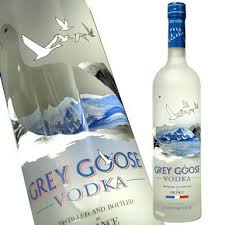
As we start to work with more International markets. we are seeing that increasingly premiumisation is different to everyone, everywhere.
It can be category specific with, for example, rapid wealth creation in emerging markets bringing about new sources of demand for products like upmarket spirits.
But it is often subject to context and location and how developed – or not – the territory may already be. It is no longer a question of whether we need to design different offers for different territories but understanding competitors – and above all culture – to decipher the semantics and mood of what premium really means for a particular territory and audience.
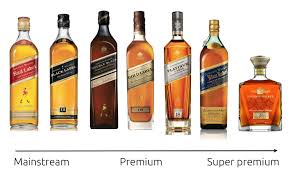
But essentially premiumisation is about establishing quality and specialness.
If we look at it from the point of view of the iconic brand, then surely they have already established this positioning? Therefore, it is probably fair to say that premiumisation is the domain of the mass market brand as they look for a share of this quality status. And there is an opportunity there for the taking.
Even in these tough economic times, when value may dictate many purchases, we have continued to seek lesser or inexpensive ways to experience luxury and specialness.
And this has created a new niche – and a ‘mass’ desire – for ‘premiumised’ products. Premiumisation has made the impossible dream possible.
But (and leaving aside territory and culture) expressions of premiumisation are evolving and brands need to premiumise in the right way.
For years, premiumisation had an established handwriting – again think Tesco Finest and how it succinctly used luxury’s visual language in a way which continues to be emulated today by its competitors as shorthand for a higher quality experience.
But we have also now moved to a more individual rhetoric spanning the range from brand and designer collaboration to authenticity; with many more expressions in between. However, one of the most interesting is where a more disruptive approach is maybe leading – or indeed narrowing – the field for premium and luxury overall. Tria Beauty is an excellent example of this. A highly premium laser hair removal and skincare company, Tria has translated the costly and labour intensive spa laser treatments into an easy-to-use at home device. A sophisticated light spectrum representing the beauty of light technology sets this brand apart and takes it from a technology offer to one that represents premium beauty. The redesign for the brand has revolutionized the category and allows the brand to dominate the shelves of retailers like Bloomingdales and Saks Fifth Avenue. Tria has successfully met the challenge of moving an offer based in technology into the realm of a sensual and captivating beauty experience.
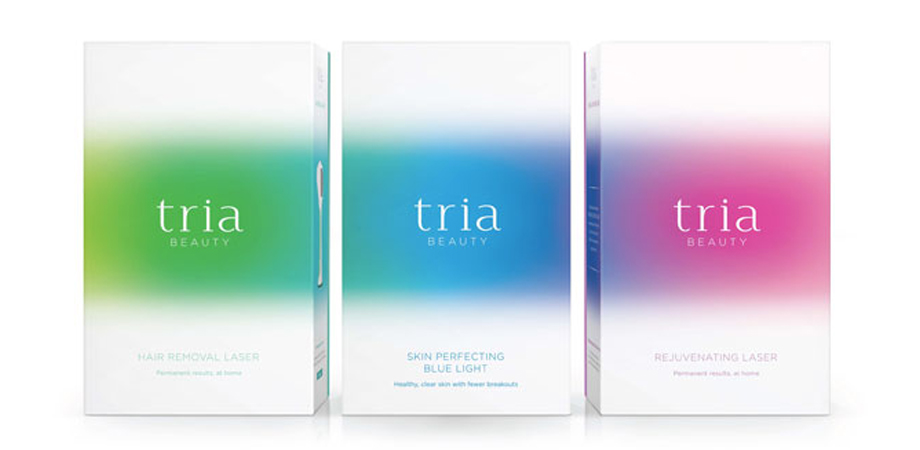
For many brands premiumisation has become an increasingly complex issue now that there are so may new and different ways and expressions to premiumise and add perceived value. And this is the crux. It’s not about just understanding what is premiumisation. But what it really means for them. It’s about adding value in the right way – creating value through desire but not valuing themselves out of their own market. And this is where Tria has succeeded – using design and creativity to drive difference and create a new future definition and space that is more than just a price point or copycat offer.
Luxury no longer follows strict category rules or cues and instead leads on imagination and originality to assert its status. And those looking to master premiumisation need to copy the luxury approach – returning to core values and quintessential beliefs to create ever more unique and individual expressions.
Premiumisation needs to come from the heart of the brand and be reflected in its behaviour – it’s about staying true to who it is, building on what makes it special and finding the most appropriate ways to heighten that specialness.
Premiumisation needs to establish difference – your difference – but at a price that can be afforded.
Source : Darren Foley, Managing Director, Pearlfisher
[ add comment ] ( 74 views ) | permalink |




 ( 3 / 2295 )
( 3 / 2295 )
Members of the packaging community are often surprised to hear about the extent to which the patent system is used by successful packaging companies.
Patents are often (wrongly) associated with complex technologies, but in actual fact there is arguably just as much inventing that goes on in the packaging industry than in, say, Smartphones. Technological developments in packaging are often not viewed as sufficiently innovative to warrant patent protection, at least not by the designers and engineers who are actually doing the development work.
However, the patent system was designed to protect incremental improvements and not just step change or disruptive innovation. For an invention to be patentable, it only needs to be more than an obvious modification of what is known and no more ‘inventive’ than this.
Considering the volumes generally involved in packaging applications, then small incremental improvements that shave ½ second off the cycle time in the erection of a carton or that save ½ gram of weight in a moulded disposable container (for example) can provide substantial cost savings. These savings may be down to a very simple feature, such as a fold line configured in a particular way or a flange with a shape that facilitates gripping or ejection.
This is precisely the sort of innovation that the patent system was designed to protect.
The World Intellectual Property Office’s database (which includes most, but not all applications filed throughout the world) suggests that an average of 40,000 patent applications were filed per year over the last 10 years for packaging related inventions (International Patent Class 65 – CONVEYING; PACKING; STORING; HANDLING THIN OR FILAMENTARY MATERIAL).
Nearly 4,500 packaging-related international patent applications (single application covering 148 territories) were filed in 2013 alone, with around 8% of these filed by UK resident companies.
Packaging is clearly a significant area of patent filing. Most of these patent applications relate to small incremental improvements, rather than breakthrough technologies. The nature of innovation tends to be incremental, but many of these steps can represent significant financial gains and in an increasingly competitive industry like packaging, it is surprising that more companies do not protect their innovations.
Aside from the competitive advantages offered by patents, the new Patent Box tax regime (10% corporation tax rate for profits from patented products) gives UK companies the opportunity to reduce their corporation tax bill significantly. It is hardly surprising that Pfizer’s planned acquisition of AstraZeneca is motivated by the Patent Box regime (as reported by the Royalty Society of Chemistry in an article in Chemistry World entitled Pfizer courts AstraZeneca megamerger published on 29 April 2014).
One little-known fact that is particularly relevant to SME packaging companies is that for a reasonably profitable product the tax savings over the first year or two can easily pay for the cost of securing UK patent protection, which is the only territory needed to qualify for the Patent Box irrespective of where in the world the revenues come from. If a company claims R&D Tax Credits and develops products, then there is a good chance that it could benefit from Patent Box.
The take-home message is that packaging companies should really consider how they protect the results of their research and development efforts. Patents not only provide the most effective way of protecting innovation, but they can now offer significant tax savings.
Author: Jason Lessard
This post was written for ThePackHub by Jason Lessard, a Patent Director at HGF Limited, a leading firm of patent and trade mark attorneys with 10 offices throughout the UK.
[ add comment ] ( 72 views ) | permalink |




 ( 2.9 / 1993 )
( 2.9 / 1993 )

 Calendar
Calendar